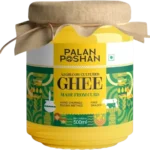Zero-click e-commerce SEO is about preparing your content, data, and brand signals so buyers or the AI agents helping them can get the answers they need instantly.
Whether it’s price, stock, delivery times, or a quick comparison pulled into a snippet, you still shape the choice and build trust even without the click. Done right, zero-click optimization makes your products visible in rich results, local packs, chat answers, and comparison panels.
It saves users time, drives assisted revenue, and strengthens your brand presence across every surface where customers make decisions.
What Is Zero‑Click E‑commerce SEO?
Zero-Click E-commerce SEO is optimizing your product pages and brand content so that search engines, AI shopping assistants, and comparison tools can provide users with enough information to make a decision without ever clicking through to your website.
Instead of relying only on traffic, you focus on shaping the choice at the source, whether that’s a Google product snippet, a chat agent response, a local pack, or a marketplace panel. These zero-click moments often show details like:
- Price, stock, and delivery time
- Product specs, sizing, and materials
- Reviews, ratings, and FAQs
How to Optimize for It
Let us explain the concept and give seven practical steps to help you win more zero-click moments while boosting the rest of your marketing efforts.
1. Define Zero‑Click for Your Store and Track It Well
Make a shortlist of zero-click wins you can measure. Examples include calls from search, clicks on directions, add-to-cart from a comparison surface, or a chat that sends a link to your product.
Tag these outcomes in your analytics so you can see the lift. Track impressions and surfaces, like product snippets, local packs, and quick answers; partnering with an ecommerce seo agency can tighten your schema, feeds, and UTM plan so these surfaces appear and get attributed correctly.
Map each surface to a page type on your site and to a feed field in your catalog. Set a baseline, then test changes one by one. Zero-click is not “no value.” It is a brand and choice moment. Treat it as part of the funnel and judge it by assisted revenue.
2. Max Out Structured Data for Rich Results and Answers
Structured data is your main tool for zero‑click. Use Product, Offer, Review, FAQ, HowTo, and Organization where they fit. Keep names and numbers aligned with the on‑page text. Put answers in short, friendly sentences that tools can quote.
Use language a fifth‑grader can follow. This earns you space in snippets and summaries and helps agents compare you well.
- Product: price, currency, availability, condition, SKU, GTIN.
- Review: average rating, count, and recent quotes.
- FAQ: short Q&A for top doubts.
- Organization: name, logo, phone, and sameAs links.
3. Write Short, Plain Answers to Real Buying Questions
Zero‑click wins happen when your page gives the exact line a tool needs. Add a Q&A block to key pages. Ask the questions customers ask in chat and in store. Answer in one or two short lines.
Avoid brand speak. Cover sizing, care, specs, materials, shipping, returns, warranty, and who the product is best for. Use real numbers and ranges, not vague claims. If an answer needs detail, give a clear link anchor.
Keep this block fresh with new questions from support and reviews. When a tool finds your clear answer, it can show it on the spot. That helps your buyer decide faster and builds trust.
4. Keep Offers and Local Info Fresh Everywhere
Zero‑click often shows price, stock, and delivery speed. Keep a fast feed flowing to search, social, and marketplaces. Sync local inventory for pickup. Update holiday hours and last‑mile cutoffs. Align return windows and warranty terms across all surfaces. If rules differ by region, say so.
- Automate feed refreshes for top SKUs.
- Provide per‑region delivery ETA ranges.
- Use back‑in‑stock alerts to capture demand.
- Match promo codes and sale dates to what you display.
5. Design Snippet‑Ready Titles, Captions, and Alt Text
Write for screens that show very little. Keep titles crisp and front‑load the part that matters most. Use captions to state what the viewer learns from the image. Write alt text that says exactly what the image shows, including color and angle.
Avoid stuffing. If the item has a key claim, like “fits under seat,” say it once in plain words. These small lines are often the ones that appear in rich results. When they are clear, users trust them and act without a click.
6. Build Brand Signals That Travel With Your Content
When tools summarize choices, brand trust can be the tie‑breaker. Pack proof that travels: a clear returns promise, warranty terms, safety marks, and verified badges. Keep store name, logo, and phone number consistent.
Publish a short “About” in plain words and link to it with sameAs. Show where you ship from and typical delivery windows.
- Keep NAP (name, address, phone) consistent.
- Use real photos of packaging and inserts.
- Publish a simple quality pledge.
- Surface human support options.
7. Measure Assisted Value and Keep the Loop Tight
Tie zero‑click surfaces to outcomes you can count. Track calls, direction taps, cart starts, coupon uses, and later orders. Watch brand search volume and direct traffic over time. Interview customers and ask what helped them choose.
If a summary often quotes your page, try to improve that block and see if outcomes rise. Share wins with paid and retention teams so they reuse the same lines. Zero‑click works best as part of the whole plan.
Conclusion
Zero-click SEO is not the end of your site. It is a faster way to help people choose well. You win by sharing clean facts, short answers, and fresh data across search, chat, and shopping panels.
Some decisions will happen without a visit, and that is fine if your brand guides the choice. Other moments will earn the click because your lines are clear and useful.
Treat zero-click as a normal part of the funnel. Define the outcomes you can measure, like calls, directions, add-to-cart on a surface, or coupon use. Map each surface to a page type and a feed field. When you want experienced eyes to shape the plan and keep the data tight, an eCommerce SEO agency like ResultFirst is a steady, practical partner.
Related Reads
- OnlyFans Account Management: How OnlyXagency Helps Creators Succeed
- How Regular Body Treatments Can Support Detoxification and Lymphatic Health
- When Is the Best Time for Pure Air Duct Cleaning in Louisville?
- Internal Wall Waterproofing – Protect Your Home with SLG Waterproofing
- PCC Jharkhand – Complete Guide by InFinityGro



